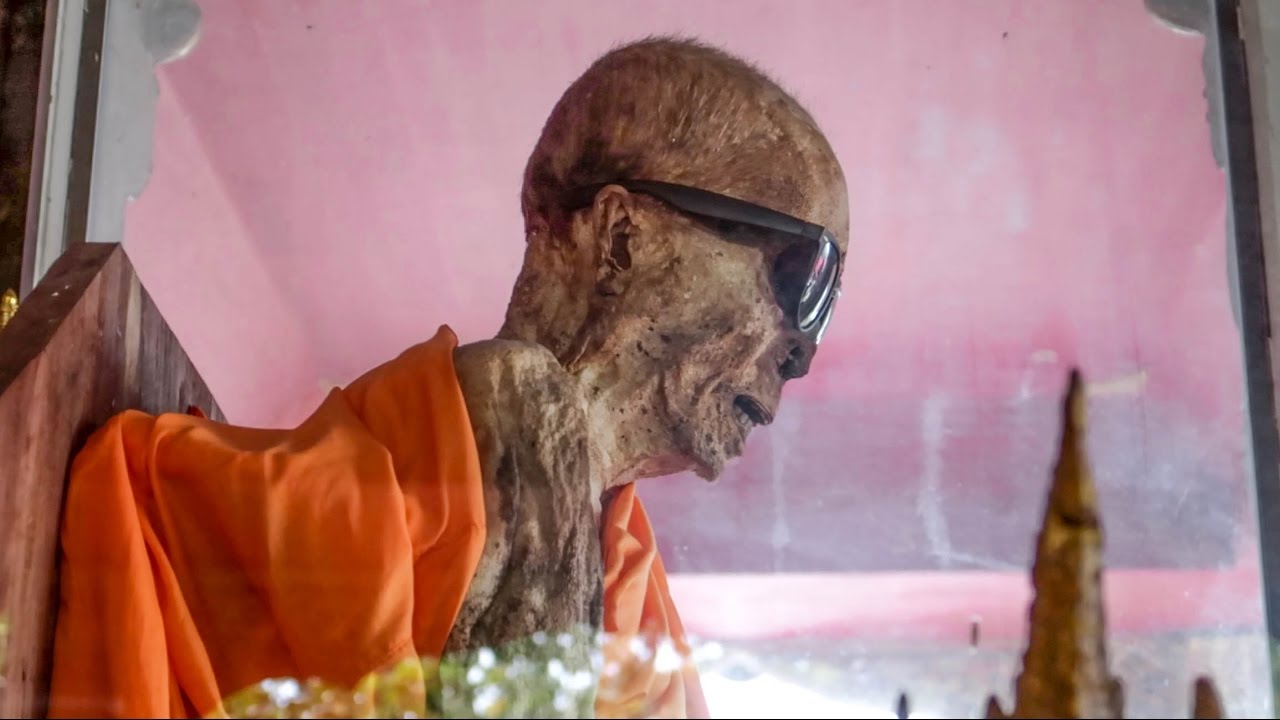Rare is the day that Mongolia wades into the international realm. These days, despite the nation’s sweeping size, its population has shriveled to less than 3 million. But every now and then, something remarkable rises out of its storied past — like a Genghis Khan find — to grab attention that has long eluded it.
Today is one of those days.

Mongolian scientists, according to reports in the Siberian Times and local Mongol media, are investigating the remains of what researchers describe as the 200-year-old corpse of a monk who was found frozen — yes — in lotus position. The monk “is sitting in the lotus position vajra, the left hand is opened, and the right hand symbolizes the preaching Sutra,” Ganhugiyn Purevbata, a professor at the Mongolian Insтιтute of Buddhist Art at Ulaanbaatar Buddhist University, told the Siberian Times.
None of this has been verified independently or described in a peer-reviewed publication.
Though incredible, there is an undeniably rich history of scientists discovering so-called “accidental mummies” in areas of extreme chill like Mongolia. Last year, a 9,000-year-old mummified bison turned up in Siberia. Then some Russian archaeologists dug up a trove of accidental mummies masked under copper plates. Even forces as powerful as decomposition will sometimes stall, it appears, in the face of fierce chills.

Perhaps even for a monk in lotus position.
The Siberian Times, which also originally broke a story about a mysterious Siberian crater, reported the monk was found on Jan. 27 in north central Mongolia. He was covered in cattle skin. “The mummified body sits in a lotus position, as if still meditating,” Mongolia’s Morning Newspaper said. “Experts that only had time to carry basic visual test say they believe the body can be about 200 years old.” At the time of that report, which hit one week ago, Mongolia’s Morning Newspaper confessed it didn’t know many of the details of the mummified monk’s origins.
But those details now appear to be filling in — along with a dose of intrigue, geopolitics and mystery. There’s strong suspicion the body belongs to famed Mongol Buddhist monk Dashi-Dorzho Itigilov, who inhabited the rugged Siberian terrain near the border with Mongolia. Born in 1852, his myth was solidified with his death in 1927, the New York Times reported in 2002.
“Then 75 and retired, [he] instructed those gathered around him to ‘visit and look at my body’ in 30 years,” Times reporter Steven Lee Myers wrote. “He crossed his legs into the lotus position, began to mediate and, chanting a prayer for the ᴅᴇᴀᴅ, died.” The intervening decades were not kind to the Buddhists inhabiting that area of Russia. Joseph Stalin’s Soviet Union enacted severe crackdowns, executing hundreds of Buddhists and laying waste to their temples. So when the Itigilov’s students came upon his cemetery 30 years after his death as he requested, it wasn’t clear what they would find.

“What they found, as the story goes, was Itigilov’s body, still in the lotus position, still perfectly intact, having defied nature’s imperative to decay,” the Times said.
Not knowing what else to do, they fitted the monk’s body back into his crypt. And there it remained for the next 75 years. Then on Sept. 11, 2002, before a small gathering of dozen witnesses, it was pulled free once more. The body was still somehow preserved, which spawned much international speculation. Was it the monk’s genes? Was it his burial process? Was he embalmed? Salt? Soil? Faith? What was it?
“To me, it is the greatest miracle in life,” spiritual leader Hambo Lama Ayusheyev said. “It turns out there are things on which time has no power.”
Now, 13 years later, it appears as though the saga of the mummified monk had a final twist. Today’s monk was discovered on a snow-covered estate in Mongolia’s Songinokhairkhan province, but local authorities believe the monk didn’t die there. “Police have revealed that the monk had been stolen from another part of the country and was about to be sold off,” the Siberian Times reported. “He had then been planning to sell it on the black market at a ‘very high price,’ with local [Mongol] media claiming he wanted to take it over the Mongolian border. Police uncovered the plot and quickly arrested a 45-year-old, named only as Enhtor.”

Though local officials suspect that this corpse was, in fact, the remains of Itigilov, many elements of the story remain unclear. How was the monk’s corpse stolen? Who is this mysterious Enhtor? There’s a black market for frozen bodies?
Whatever this story’s resolution — whether the body is the monk’s corpse, or another monk’s corpse — the body is now reportedly under guard at Ulaanbaatar’s National Center of Forensic Expertise.
“If the meditator can continue to stay in this meditative state, he can become a Buddha,” Barry Kerzin, an aide to the Dalai Lama, told the Siberian Times. “Reaching such a high spiritual level, the meditator will also help others. And all the people around will feel a deep sense of joy.”





